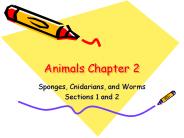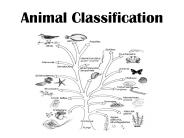Cephalopods PowerPoint PPT Presentations
All Time
Recommended
THE MOST FISHED SQUID, COMMON IN MONTEREY BAY. COMMUNICATING SQUID ... YUMMY SQUID? HUMANS LIKE TO EAT SQUID IN THE FORM OF CALAMARI. RESEARCH WITH SQUID ...
| free to download
SQUID CAN BE MANY SIZES & COLORS. CUTTLEFISH. CUTTLEFISH LIKE TO BURROW BENEATH THE SAND TO HIDE ... THE BLUE-RINGED OCTOPUS IS SMALL BUT HIGHLY VENOMOUS ...
| free to view
BLUE-RINGED OCTOPUS. THE BLUE-RINGED OCTOPUS IS SMALL BUT HIGHLY VENOMOUS. VEINED OCTOPUS. VEINED OCTOPUS LIVE IN THE INDO-PACIFIC. THEY LIKE TO HIDE IN CONONUT ...
| free to view
They are pelagic and nektonic using a mechanism of jet propulsion to move and ... Modern forms include squids, cuttlefish and octopuses. ...
| free to view
Chambers, 10 tentacles, 'cuttlefish' Order Teuthoidea Jur.-Rec. ... The 'cuttlefish' A common delicacy. In the Mediterranean. Area. Has an internal shell ...
| free to view
Iridophores can be found in cuttlefish, some squid and some species of octopus. Leucophores ... occurring on some species of cuttlefish, squid and octopus. ...
| free to view
Seasonal onshore/offshore (spawning & feeding grounds) ... Bluefish. Summer Flounder. Mackerel. Clupeids. Squid. Weakfish. Winter Flounder. Scup. Tilefish ...
| free to view
foot is in head region. modified for expelling water from mantle cavity ... accessory/branchial at base of each gill pressure. Classes of Molluscs: Cephalopoda ...
| free to view
Several, such as octopus and cuttlefish can very rapidly change colour to suit ... Cuttlefish posses a calcareous internal support (often referred to as cuttlebone' ...
| free to view
Squid/cuttlefish: 10 arms. 8 with suction cups. 2 retractable without suction cups. Color ... Octopus and Cuttlefish have poison in saliva. Circulatory. Closed ...
| free to view
Frozen cod-like groundfish species including minced and fillets. WORLD GROUNDFISH IMPORTS ... Frozen whole, minced and frozen fillets of cod-like species ...
| free to view
More than 80% of birds in the Antarctic region are penguins. ... There are two main types of whales in Antarctica, the baleen and the tooth whales. ...
| free to view
The Phylum Molluska By: Zach Lashbrook & Sarah Briggs Different Types of Mollusks Cephalopods Gastropoda Bivalvia Polyplacophora Cephalopoda ...
| free to download
Phylum: Mollusca Gastropods, Bivalves & Cephalopods Mollusks Mollusks are soft-bodied animals that usually have an internal or external shell. Ex.
| free to download
Outline The coelom Molluscs Bivalves Cephalopods Gastropods Annelids Arthropods Crustaceans Uniramians Chelicerates Echinoderms Advantages of Coelom Protostomes vs ...
| free to view
... demonstrate that Iberians fished sardine and hake in the coast of Morocco ... specialization of fishing (small pelagics, hakes, shrimps, cephalopods) ...
| free to view
Pennsylvanian Time. Permian Time. Mesozoic and Tertiary Times ... Crinoid. Cephalopods. Brachiopods. Trilobites. Bryozoans. Ostracodes. Echinoderms. Graptolites ...
| free to view
squids, Octopus, Nautilus, cuttlefish, Siphon on mantle edge 'rocket' away from predators ... Mollusca. Class Cephalopods. Octopus. Complex behavior, learning ...
| free to view
More Invertebrates. Chapter 30. Outline. The coelom. Molluscs. Bivalves. Cephalopods. Gastropods ... Differentiated according to three major events in ...
| free to download
Mass extinctions mainly of cephalopods. First appearances of ... Small, rodent-like creatures. Possibly nocturnal. Some lines became extinct in Cretaceous ...
| free to download
Most animals are diploid and reproduce sexually. Blastula (early embryonic) ... Except for the chambered nautilus, cephalopods have small internal shells ...
| free to view
All other then cephalopods. Visceral mass holds most internal organs. Sight ... Many have protective. ink. Cephalopod Characteristics con't: Siphon (aka funnel) ...
| free to view
Cephalopod Data (Uwe Piatkowski) Fish Data (www.fishbase.org) How to Estimate Trophic Levelss ... Mammals, Birds and Cephalopods in the Mediterranean ...
| free to view
Biology 320 Invertebrate Zoology Fall 2005 Chapter 12 Phylum Mollusca Part Three Class Cephalopoda 700 extant spp. described Nautiloids, cuttlefish, squids, and ...
| free to view
Marine Fishes Pelagic organisms that can actively swim (against a current) are known as nekton Nekton include some invertebrates such as cephalopods and pelagic ...
| free to view
FishBase 2000 used for Fish Data Table. FAO Catalog and Pauly et al. 1998 ... groups (birds, cephalopods, crustaceans, benthos and zooplankton) are needed ...
| free to view
1. Octopus. 5. Squid. The answers are ... G - GASTROPODS. B - BIVALVES. C - CEPHALOPODS. 3. Clam. 6. Snail. 2. Slugs. 4. Mussels. 1. Octopus. 5. Squid. G. B. C. C ...
| free to download
An example of a multispecies GADGET model for the Celtic Sea. ... Micro-benthos. Sessile. Invertebrates. Cephalopods. Micro- plankton. Pelagic. Bacteria. Phytoplankton ...
| free to view
Exploring life in the mid-Atlantic at various depths down to 4 km (2.5 miles) ... The group of animals known as cephalopods include squids and cuttlefish. ...
| free to download
Mollusks. Hydroskeleton. Live in water and in damp land enviroments. Those that live in water have gills. Most have hard shells that cover a soft body ...
| free to view
Mollusca - Cobb Learning ... Phylum Mollusca
| free to view
... use a radula to scrape algae from rocks Carnivores use jaws to eat prey like the octopus Filter feeders use a siphon to catch plankton Gas exchange via ...
| free to view
Title: Slide 1 Author: Lee Mishkin Last modified by: admin Created Date: 4/27/2005 12:14:33 AM Document presentation format: On-screen Show (4:3) Other titles
| free to view
| free to view
Marine Invertebrates (Part 2) Decapods Shrimp http://www.dnr.sc.gov/marine/sertc/gallery.htm http://www.ucs.louisiana.edu/~rtb6933/shrimp/rima_con.JPG Decapods ...
| free to view
Phylum Mollusca Soft-bodied animals! 3 Classes of Molluscs GASTROPODA : includes limpets, snails, slugs and whelks BIVALVIA: includes clams, oysters, mussels ...
| free to view
Annelids Class Bivalvia two shell Clams, oysters, scallops Most are sessile Epifaunal on top of bottom (oyster, mussels) Infaunal in bottom (clams) Some ...
| free to view
Mollusks are soft-bodied animals with a hard protective covering. There are many types of mollusks, including clams, oysters, snails, squid and octopi.
| free to view
Animals Chapter 2 Sponges, Cnidarians, and Worms Sections 1 and 2 Definitions Nerves carry signals throughout the body Ganglia groups of nerves bundled together.
| free to download
| free to view
Cuttlefish. A cuttlefish looks like a squid but with shorter tentacles and a wider body. ... cuttlefish. cuttlefish. Chambered Nautilus. The nautilus is the ...
| free to view
Title: Whiskey is for drinking and water is for fighting Author: Deanna Marie Combs Last modified by: cestest Created Date: 6/18/2001 7:24:08 PM Document presentation ...
| free to view
PowerPoint Presentation ... 5. Molluscs
| free to download
Zoology Chapter 12 Mollusk Ms.K.Cox
| free to download
Reproduction usually external fertilization in the water. ... They move by jet propulsion. Many have an ink sac to distract potential predators.
| free to view
Title: PowerPoint Presentation Author: Unknown User Last modified by: Marian Weber Created Date: 10/13/2003 1:45:02 AM Document presentation format
| free to download
Mollusks have well developed head with mouth and sensory organs. Mollusk shells have several layers, the inside layer is the smoothest and thickest. ...
| free to view
| free to view
Trophic Signatures of Marine Organisms in the Mediterranean as Compared with Other Ecosystems Rainer Froese1, Stefan Garthe2, Daniel Pauly3, Uwe Piatkowski1
| free to view
... live in the sea ... Slugs, squids, and octopuses have a reduced internal shell or ... Gastropods (Snails, Slugs) About three-quarters of all living species ...
| free to view
Squid, octopus) E) Class Polyplacophora (ex. Chitons) Class Bivalvia ... cuttlebone of cuttlefish) or absent (Octopus); only the nautili retain a shell. ...
| free to view
Class Bivalvia: clams, scallops, mussels, oysters; shell with two valves; lack radula and head; most marine; foot reduced or used for digging; include shipworms ...
| free to view
Chapter 16: Molluscs Form and Function Mollusc body plan: Head-foot Visceral mass Head-foot: Contains the feeding, cephalic sensory and locomotor organs Visceral mass ...
| free to view
Marine, freshwater, and terrestrial habitats. ... Jet-propulsion system. Muscle contractions. Forces water out through narrow funnel. Cuttlefish and squid very motile.
| free to view
Metazoan Invertebrates. Mollusca. Gastropods. Shell and viscera twisted 180 ... Metazoan Invertebrates. Arthropoda Trilobites. Swimming or crawling arthropods ...
| free to download
























































